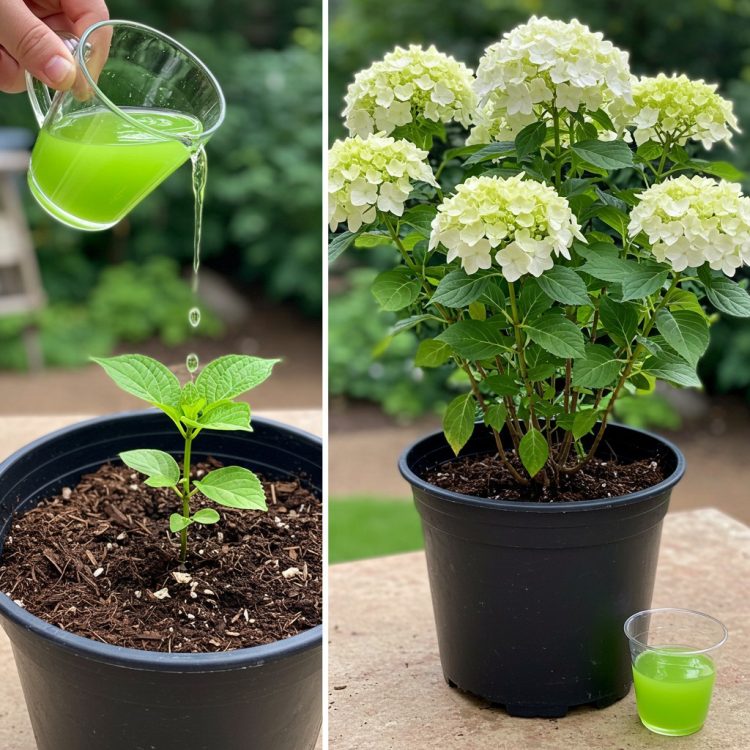Planting Hydrangeas the Right Way
Follow these simple steps for planting success:
Dig a hole that’s twice as wide as the root ball and just as deep.
Gently remove the plant from its container and loosen the roots.
Place it in the hole so the top of the root ball is level with the surrounding soil.
Backfill with amended soil and water thoroughly.
Add a 2–3 inch layer of mulch to retain moisture and suppress weeds.
Plant in spring or fall for the best results, avoiding the hottest summer days.
Watering and Feeding
Hydrangeas love moisture but don’t like sitting in soggy soil. Here’s how to keep them hydrated and healthy:
Water deeply once or twice a week, especially during dry spells.
Avoid shallow watering—it encourages weak, surface-level roots.
Apply a balanced, slow-release fertilizer in early spring and again in midsummer if needed.
For blue flowers, add soil acidifiers like aluminum sulfate. For pink, use lime to raise the pH.
Consistent moisture and occasional feeding are the keys to strong growth and vibrant blooms.
Pruning Tips for Bigger Blooms
Pruning needs vary by hydrangea type:
Bigleaf and Oakleaf hydrangeas bloom on old wood (last year’s stems), so prune only after flowering.
Panicle and Smooth hydrangeas bloom on new wood, so you can prune them in late winter or early spring.
In general:
Remove dead or weak stems to improve airflow.
Shape the plant to encourage fuller growth.
Don’t over-prune—hydrangeas don’t require drastic cutting to thrive.
Knowing your hydrangea variety ensures proper pruning and better flowering.
Changing Bloom Colors (Optional)
One of the fun aspects of hydrangeas—especially Bigleaf types—is the ability to change their bloom color:
Blue flowers: Add aluminum sulfate or sulfur to make the soil more acidic (pH 5.2–5.5).
Pink flowers: Add lime to raise the soil pH above 6.0.
Note: White varieties typically do not change color based on soil pH.
Protecting Hydrangeas Through the Seasons
Hydrangeas are hardy, but a little seasonal care helps them thrive:
In summer, keep them well-watered and mulched.
In fall, stop fertilizing and allow the plant to go dormant.
In winter, add a thick mulch layer around the base in colder regions, especially for Bigleaf and Oakleaf types.
In very cold zones, cover the base with burlap or a frost cloth to protect buds from freezing.
Conclusion
With their lush foliage and bold, beautiful blooms, hydrangeas bring charm and sophistication to any garden. The best part? You don’t need to be an expert to grow them. By choosing the right variety, planting them correctly, and following a few simple care tips, you’ll enjoy stunning blooms season after season.
So grab a shovel, find the perfect spot in your garden, and let these easy tricks guide you to growing hydrangeas that impress year after year.
